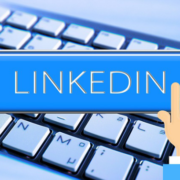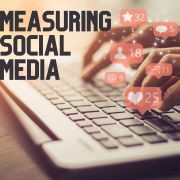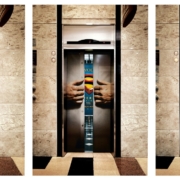9 Secrets of Linkedin copywriting that you can’t do without
As we progress through the age of information, the collective human attention span has only diminished. And this is completely normal, given the vast amount of information we’re required to process within a limited time. In fact, this has prompted the field of marketing and advertising to present valuable content within a limited number of words. This is reflected in the social media ad copy as well. Now the point is, competition for the attention of LinkedIn users is just as stiff as on any other social media channel. Of course, the paid promotion has its own place reserved on the user’s feed despite the number of organic content. So, presented below are a few best practices on LinkedIn Copywriting.
-
Table of Contents
Maintain Clarity on What’s the Offer and Who it’s for
On LinkedIn, you generally pay according to the cost-per-click (CPC) system. This means you pay when someone clicks on your ad. But, you DON’T pay when someone notices your ad but doesn’t click.
Hence, you wouldn’t want to draw unqualified clicks as that only leads to the wastage of money. Advertisers often use the aspect of curiosity to draw in a prospect. Again, that works rather effectively in case of Facebook ads. On LinkedIn, you’ll often end up splurging a lot more money.
-
Keep it Short and Sweet
According to Mark Wilson an expert of AssignmentHelp, You have around 600 characters to write an intriguing introductory text for your ad, spaces included. However, this doesn’t mean that you should necessarily fill the whole space up just because you can.
In this case, many experts believe that copies of 1-2 lines work the best, and the reason for that is quite simple. After the second line, users will have to click the see more option to find the rest of the content. And people won’t do that just to find out what exactly you wanted to convey through your ads.
Keep in mind that the majority of users won’t stop at every ad you post to read it before they make up their mind. So, you have to get your point across within two lines.
-
Add a link in your LinkedIn copy
Even though there’s designated place within the creative to include your destination URL, this isn’t the only place where you can add the URL. You can actually incorporate URL in the copy as well.
Sometimes, users would prefer clicking on the link within the copy rather than the ad itself. This is particularly when the whole text, along with the URL, fits under two lines. Having the URL before the see more link pops up will increase the visibility of the copy.
-
Incorporate Numbers
Adding a number in your LinkedIn ad copy is another pertinent way of grabbing the attention of the users. There may not be any concrete explanation behind why numbers work, but it may have to do with the “scarcity” of numbers in a piece of content full of letters.
This is the reason when a person sees a number within a piece of text; it immediately holds his attention because it’s a different character that they don’t notice in these ads as much.
-
Present a CTA Strategically
Having a proper CTA is crucial when it comes to an appealing LinkedIn ad copy. Sometimes, we often wrongly assume that users will instantly understand what to do when they find your ad. But the fact is you might need to nudge your consumer a little on that.
Consider what you want the user to do after they’ve clicked on your ad. Do you want them to download an ebook, request more details, sign up for a webinar, or directly buy your products? Let them know with an effective CTA in a visible place.
You should add the call to action at the beginning of the copy, or at the end. Once you have an idea of what you want LinkedIn users to do after clicking on your ad, think of what would be the best possible way to express it.
Some of the typical examples include:
- Sign up now
- Read more
- Download ebook
- Start your free trial
-
Use an Appealing Ad Headline
Every great LinkedIn ad copy usually comes with a compelling ad headline.
Ad headlines are the short texts that appear right below the banner. And they are extremely significant when it comes to emphasising on your initial message. Always make sure to include a CTA in your headline, along with adding any other relevant information.
-
Adopt a Specific Tone with Your Audience
It’s vital that you remember that creating an excellent LinkedIn ad copy involves employing a specific tone. And the tone should adapt to your target consumers. Think of it this way; you won’t speak to teenagers the same way you would to your superiors at work.
However, there’s also one interesting phenomenon that has been happening in the last few years. Many professionals, particularly in the startup and tech environment, have a different image apart from the usual suits and ties.
In fact, some of these professionals now respond better to a more casual tone rather than a more formal one. So, it’s always a wise choice to carry out A/B testing with different tones that you can use.
-
Write the Name of Your Brand
By default, a sponsored post on LinkedIn will include the brand name right above the copy. This is basically the name of your LinkedIn Company page.
However, you should make sure that you also write the brand name in either your ad description or ad headline. A professional copywriter understands that this small and effortless action will enable you to maximise your brand awareness and let people remember your brand the next time they find your content.
-
Carefully Mention the Details
Your LinkedIn copy is a lot like your sales pitch. But unlike the real sales pitch, you don’t get the luxury to respond to any questions that the target consumers may have as he/she reads or notices to your pitch. So, your copy needs to explain all of the crucial points and information necessary to help the consumer arrive at a decision.
Devote some time thinking of the potential customers who might be interested in your product or service – then make sure you’ve provided answers to these questions in your copy.
Wrapping it up,
The thing about great LinkedIn copywriting is that the techniques don’t change every now and then, regardless of how technology has impacted our profession. These ideas offer time-tested, classic advice in this matter.
Continue Reading: 15 Minutes To a Powerful LinkedIn Network
About the Author
Henry Howkins is a senior social media manager for a renowned college in Australia. Howkins has acquired his MBA in Media Marketing from Murdoch University. He holds an extensive understanding of social media ads. He’s also an academic advisor for MyAssignmenthelp.com and offers assignment help to students.


 webdevelopers-copywritercollective
webdevelopers-copywritercollective


 marketing-copywriter-collective
marketing-copywriter-collective

